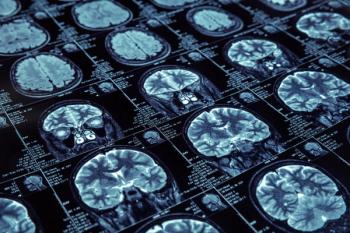
- November 2019
- Volume 85
- Issue 11
Pass Along These Pearls to Patients With Runny Noses
Home remedies or medical intervention? Cause and symptoms dictate type of treatment.
Nasal congestion and rhinorrhea are common and can occur year-round for many reasons. These minor maladies often can be treated with home remedies. There are times, however, when medical treatment is necessary.
CONGESTION AND RHINORRHEA
Nasal congestion occurs when mucus becomes sticky and thick, making it hard to expel, and when the nasal passages become inflamed. Rhinorrhea, also known as a runny nose, occurs when excess mucus drains from the nose. This mucus can be clear or opaque, constant or intermittent, and thick or thin.1
CAUSES
Production of mucus in the nose and sinuses is necessary to keep the nose moist. The mucus typically is swallowed.1 Many conditions may cause the nose and sinuses to produce too much mucus, resulting in nasal congestion or a runny nose. Here are some of these conditions:
- Colds and the flu. Illnesses can cause excessive mucus production, so much so that the sinuses can become obstructed. This is because the body has recognized that there is an infection, either bacterial or viral, and sent signals to the immune system to start to fight the infection.2,3 A runny nose, because of a cold or the flu, may present with other symptoms, such as cough, facial pressure, fatigue, fever, and/or a sore throat. If a fever occurs, patients should see their doctor as soon as possible, because they could have the flu. Colds do not produce fevers.
- Cold weather. Although it is unknown how, cold weather can cause a runny nose.
- Crying. Tears produced from crying drain into the nasal sinuses through the tear ducts.
- Infections. The sinuses of the face can drain into the nose. If there is an infection in the adenoids or sinuses, for example, the infection, called sinusitis, will produce excessive infectious mucus.4
- Allergic rhinitis. Reactions to allergens, such as dust mites, pet dander, or pollen, often result in an immune response that produces excessive mucus to try to combat them. This mucus production is usually accompanied by sneezing and watery eyes.5
- Vasomotor rhinitis. Excessive mucus production can result from a nasal reaction to irritants, such as perfumes, pollution, smoke, or spicy food.6
- Large/swollen turbinates. Turbinates, bones along the inside of the nose, can swell due to allergies or infections. This can block the sinuses from draining and cause congestion.
- Large adenoids. Excessive mucus production can be caused by and cause swelling of the adenoids, the tissue at the back of the nose. This usually occurs in children.
- Nasal polyps. The lining of the nose can develop these grape-like growths. The body may recognize polyps as foreign bodies and initiate an immune response, causing excessive mucus production.7
- Foreign bodies. Insertion of a foreign body in the nose is commonly seen in young children, whether it be it a bead, Lego piece, or any other small object. The body reacts with an immune response and can produce foul-smelling mucus drainage.
- Nasal cysts or tumors. Benign or malignant tumors of the nasal passages are rare, but they do occur. When this happens, usually just 1 side of the nose shows excessive mucus production.
- Choanal atresia or pyriform aperture stenosis. Choanal atresia refers to a congenital birth defect in which there is nasopharynx obstruction with bone or tissue. When both sides are closed off, the diagnosis is usually revealed right after birth. If, however, just 1 side is affected, it may not be diagnosed until later in life.
- Deviated nasal septum. The wall made of bone and cartilage that separates the 2 sides of the nose may lean to 1 side. This may be present at birth or be the result of trauma to the nose. A deviated septum may cause obstruction.
WHEN TO SEEK MEDICAL CARE
Patients should seek medical attention if the discharge has blood in it, is clear after a head injury, is accompanied by sinus pain, is green or yellow, or symptoms are accompanied by a fever that lasts for more than 10 days. Parents should call their pediatrician if a child is younger than 2 months and has a fever or if the rhinorrhea or sinus congestion makes breathing or feeding difficult.
HOME REMEDIES
Although the cause of rhinorrhea most likely dictates treatment, patients should avoid allergens and irritants and can try home remedies to relieve their symptoms. These will not cure rhinorrhea but may make a patient more comfortable until the condition resolves:
- Fluids. Advise patients to stay hydrated. This will help keep the mucus thin and easy to expel. If patients become dehydrated, the mucus may become sticky and thick, causing congestion. Remind patients to stay away from liquids that dehydrate, such as alcohol and coffee.
- Hot tea. The steam from a cup of hot tea can help loosen and thin the mucus in the nasal passages. Some teas, preferably without caffeine, contain herbs that have mild antihistamine, anti-inflammatory, and decongestant properties. These ingredients include chamomile, ginger, mint, and nettle.8
- Facial steam. Inhaling steam is effective at relieving congestion and rhinorrhea. The results of a study conducted in 2015 showed that treating the common cold by inhaling steam reduced illness recovery time by about a week.9
- Hot shower. A hot shower works in the same way as hot teas, without the herbs, and steam inhalation therapy.
- Neti pot. A neti pot provides a convenient way to perform a nasal lavage or irrigation to clear out mucus in the nasal passages. Advise patients to use distilled or sterile water in their neti pots to reduce the risk of causing a sinus infection.
- Spicy foods. Although spicy foods can stimulate a runny nose, these foods are great for clearing up congestion. Examples of hot spices include cayenne, ghost, and habanero peppers; ginger; and horseradish. These spices can dilate the passages in the body and help clear up sinus issues.
- Saline nasal spray. Patients can rinse their sinuses with a saline nasal spray to keep them moist and thin mucus.
- Warm washcloth. Patients can apply a warm washcloth to their faces several times each day to help sooth sinus pain and thin mucus.
- Humidifiers. These can keep mucus thin and easier to expel and the nasal passages moist.
MEDICAL TREATMENT
As with home remedies, medical treatment is dictated by the cause of congestion and/or rhinitis. Some causes may require surgery, such as a choanal atresia, deviated septum, foreign bodies, nasal cysts or tumors, piriform aperture stenosis, or polyps. Medical treatment options include:
- Antibiotics or antivirals. Antibiotics are useful for bacterial infections, such as sinus infections or strep throat. Antivirals are good for the flu, if patients take them early in the disease. Neither should be used for a cold or a sore throat not caused by group A Streptococcus bacteria.
- Antihistamines. Antihistamines help dry up mucus and treat allergic rhinitis.
- Nasal spray decongestants. Advise patients to follow a 3-days-on and 3-days-off schedule when using these drugs, as they may cause rebound congestion.
- Oral decongestants. Decongestants help dry and shrink the nasal passages. Always discuss patients’ medical history and medication regimen before making recommendations. And because many allergy, cold, and cough medications contain more than 1 ingredient, advise them to follow directions for safety reasons and to be cognizant of the ingredients of OTC remedies, so as not to double up on medications.
Kathleen Kenny, PharmD, RPh, has more than 25 years of experience as a community pharmacist and is a freelance clinical medical writer based in Colorado Springs, Colorado.
REFERENCES
- Chronic rhinorrhea (runny nose). Stanford Children’s Health website. stanfordchildrens.org/en/service/ear-nose-throat/conditions/chronic-rhinorrhea. Accessed August 20, 2019.
- US National Library of Medicine. Flu. MedlinePlus website. medlineplus.gov/ency/ article/000080.htm. Updated October 2, 2019. Accessed October 9, 2019.
- US National Library of Medicine. Common cold. MedlinePlus website. medlineplus.gov/ency/article/000678.htm. Updated October 2, 2019. Accessed October 9, 2019.
- US National Library of Medicine. Sinusitis. MedlinePlus website. medlineplus.gov/ ency/article/000647.htm. Updated October 2, 2019. Accessed October 9, 2019.
- US National Library of Medicine. Allergic rhinitis. MedlinePlus website. medlineplus.gov/ency/article/000813.htm. Updated October 2, 2019. Accessed October 9, 2019.
- What triggers vasomotor rhinitis (runny nose)? St. Joseph Hospital website. sjo.org/our-services/nasal-sinus-center/allergies/what-triggers-vasomotor-rhinitis-runny-nose-/. Accessed August 20, 2019.
- US National Library of Medicine. Nasal polyps. MedlinePlus website. medlineplus. gov/ency/article/001641.htm. Updated October 2, 2019. Accessed October 9, 2019.
- White A. How to stop a runny nose at home. Healthline. May 14, 2019. healthline. com/health/how-to-stop-a-runny-nose. Accessed August 20, 2019
- Nanda MS. Efficacy of Steam Inhalation with Inhalant Capsules in Patients with Common Cold in a Rural Set Up. IOSR Journal of Dental and Medical Sciences. 2015;14(1):37-41. bit.ly/2Mw4nB9.
Articles in this issue
almost 6 years ago
Can You Read These Rxs? (November 2019)almost 6 years ago
Walmart Essay Winner: A Community Pharmacist's Impact Can Go a Long Wayalmost 6 years ago
Descovy from Gilead Sciences Incalmost 6 years ago
November 2019 Generic Product Newsalmost 6 years ago
OTC Focus Case Studies: Eye Problemsalmost 6 years ago
When Is a "Whoop" Not a Cheer?almost 6 years ago
Devices, Not Just Doctors, Should Engage Patientsalmost 6 years ago
Implementing Critical Pathways of Clinical Care at Moose PharmacyNewsletter
Stay informed on drug updates, treatment guidelines, and pharmacy practice trends—subscribe to Pharmacy Times for weekly clinical insights.



















































































































































































































